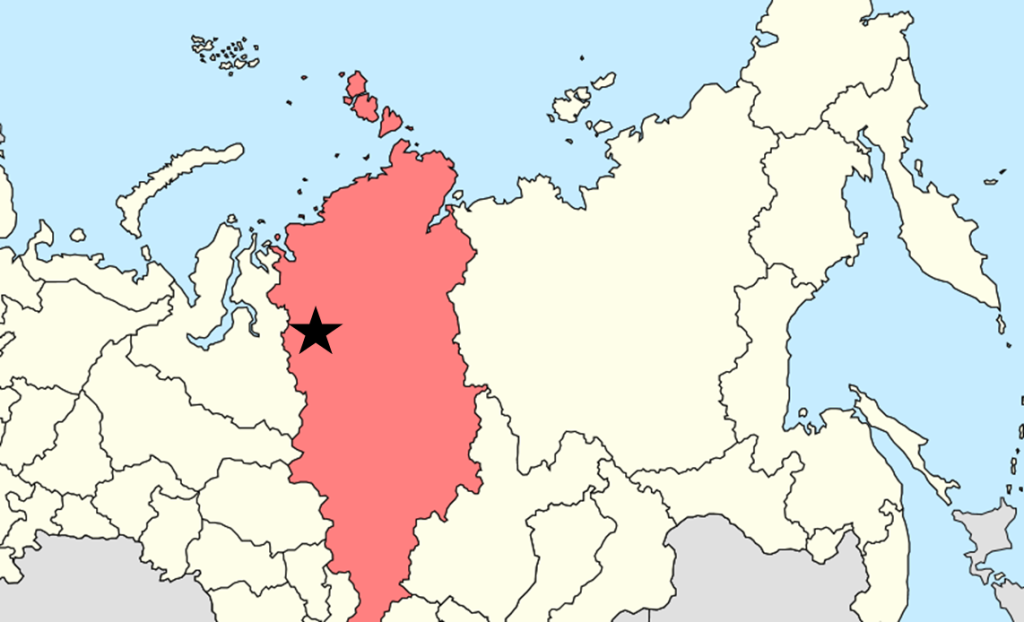A number of media outlets are reporting on how a Russian Tupolev jet “froze” at Igarka Airport in Siberia, some 3000 kilometers east of Moscow, 160 kilometers above the Arctic circle.

The Russian RT News Agency here reports that the plane “froze to the ground“. Yet another report says that it was actually the plane’s brake system that froze in the horrible -60°F Siberian cold, and not the tires to the surface.
German Bild daily writes:
“At the village of Igarka, about 3000 kilometers east of Moscow, 74 passengers were waiting for the departure of their Tupolew Tu-134 to Krasnojarsk. But the plane did not take off – down to minus 52°C nothing worked: The brake system was frozen!”
But RT writes that “the ice-covered ground was the reason the plane couldn’t be moved”
Technically and physically, I find it implausible that a plane would freeze to the ground, meaning it would have to have been first wet under the tires. Highly unlikely at such dreadful temperatures, even with the increased pressure from the weight of the plane. And wouldn’t such a problem occur routinely if that were the case?
The other question is what could happen to brake fluid or brake equipment at temperatures under -50°C? One could imagine things tending to gum up a bit.
Bild daily adds more details:
“Vladimir Artemenko, Technical Director of the airline, however denies that the jet’s braking system was frozen. “The aircraft was technically without faults’ he said. The local presecutor is now investigating for possible violations of maintenance regulations.”
Whatever caused the frozen jet, global warming doesn’t seem to have come to Igarka at all. What follows is a chart depicting mean November temperatures. As we see, the normal low for this date is around -26°C:

The daily average low (blue) and high (red) temperature with percentile bands (inner band from 25th to 75th percentile, outer band from 10th to 90th percentile). Source: weatherspark.com/averages/33842/11/Igarka-Krasnoyarsk-Krai-Russian-Federation
That makes a temperature of -52°C a heck of a lot colder than normal, not the sort of thing you’d expect from warming. In fact, looking at the chart, the chances of the temperature reaching -52°C up there in November are pretty slim.





… unless one is a warmist.
The video shows no wheel rotation problem, best guess is what it says, to do with the ground tractor. Remember, these people are about to fly on the aircraft.
Here we are
http://en.itar-tass.com/russia/763797
The Tu-134, does it fly up in the sky where it is cold?
Many Russian bloc aircraft use compressed air for operating various services, particularly engine starting, as it’s not affected by very low temperatures in the way that batteries are. This is fine SO LONG AS the air is kept dry by a desiccant system. If that hadn’t been maintained properly, any moisture in pipework / valves etc. would freeze. I don’t know if this particular aircraft uses air for the brakes, but it’s a possibility.
As an aside, pilots of smaller Yak & Sukhoi planes can often be seen walking around with their “jump starter” – a small high pressure cylinder and hose…
Ingenious!
Pierre,
There is a lot of information available for operating equipment in Arctic conditions. Just Google Arctic Mining.
I was exposed to this fascinating topic when I visit a diamond mine to the North of Yellowknife in Canada. For instance, hydraulic excavators cannot just stand and idle as the hydraulic fluid would freeze in the various pipes leading to the cylinders, somebody has to jiggle the machine around every half-an-hour or so to keep the hot fluids circulating and the feeder pipes from freezing.
The main equipment suppliers like Caterpillar and Komatsu have dedicated Arctic mining equipment maintenance engineers and operational practices information bulletins, if you are interested in more background info.
Temperatures haven’t been ‘adjusted’ yet….
Aviation hydraulic fluids use a mixture of alkyl and aryl phosphate
ester base oils. Operating range from -55C to +120C.
Civil Aircraft!
I have worked outside in temps of -40 for multiple days in a row, the worst being -52F. In a ham sandwich in my coat pocket, the ham, bread, and mustard all froze. The only substance unaffected was peanut butter. Maybe peanut oil should be considered.